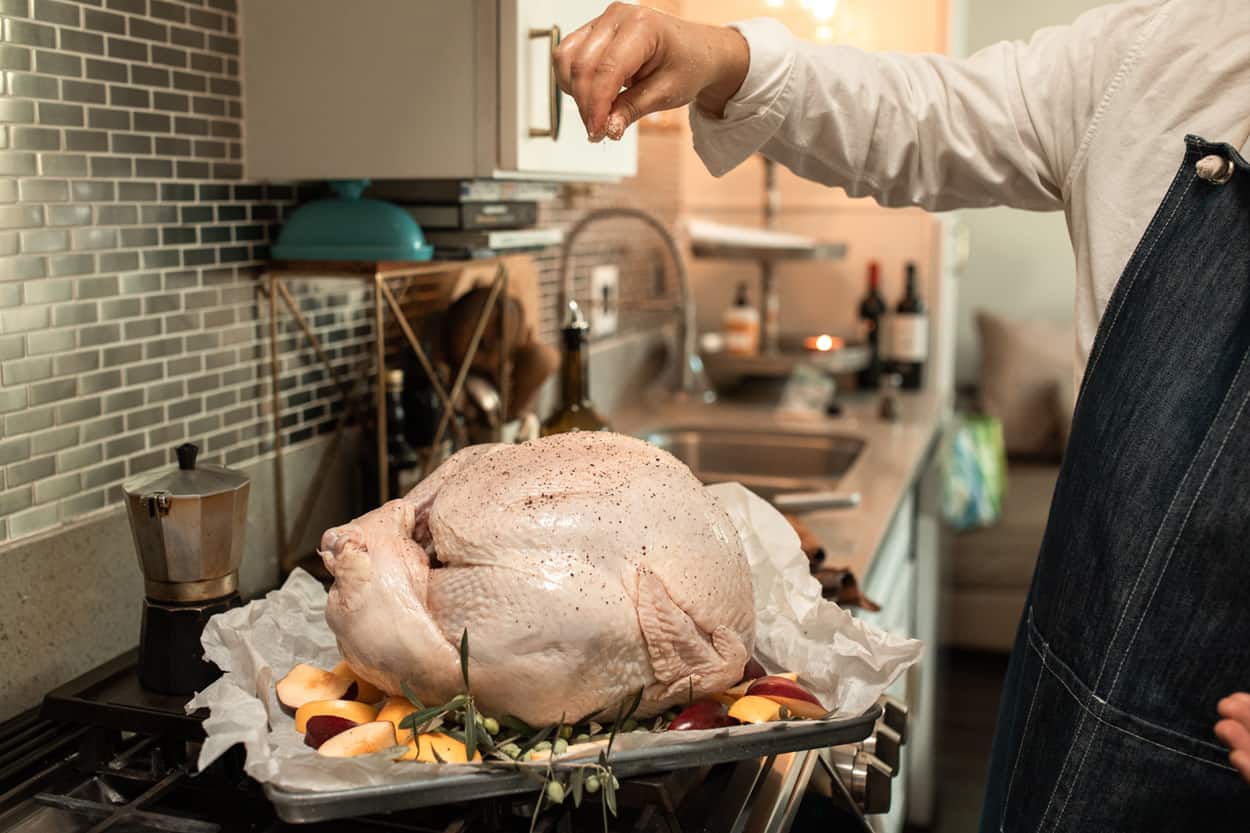
How to Cook a Perfect Turkey?
Turkey is one of the best meat dishes you can eat, but it comes with some unique processes that you must follow to cook a perfect turkey. We will be discussing this in depth and detail so that when your big holiday arrives and you are serving turkey, you can prepare the best turkey ever and all your guests will remember the turkey for being moist, succulent, and tender.
Before we get into the specifics of the turkey itself, we need to look at some things you should have on hand before you start. First on my list is good meat thermometers, both an instant read thermometer and a leave-in roasting thermometer. I use the ChefsTemp Final Touch X10 digital instant read thermometer for spot checking temperatures during the thawing process and cooking processes, and I use the Smartro ST54 digital cooking thermometer to monitor the thawing process and during the cooking process. This thermometer is a leave in dual probe thermometer with leads long enough to have the unit outside of your oven so that you can instantly monitor the temperature of the turkey as it roasts.
Now that we have our thermometers, what else do we need? A roasting pan with a roasting rack in it, this will elevate your turkey and allow you to have access to the cooking liquid in the pan so that you can baste the bird as it cooks. You will need a turkey baster, word to the wise with turkey basters, look for and procure a turkey baster with a glass barrel, the plastic ones are good for one use, you can buy a new one every time you prepare a turkey, or you can spend a little more and get a quality baster. Your other option is to get a heavy-duty meat injector and use it to baste with.
You will also need aluminum foil, your seasonings for your turkey, and if you get a fresh turkey, you will need a container large enough to brine it in.
Items needed:
- 14–16-pound turkey, fresh or frozen
- Wide aluminum foil
- An instant read thermometer
- Smartro ST54 dual probe cooking thermometer
- Salt
- Black pepper
- Garlic powder
- Onion powder
- Poultry seasoning
- Chicken broth
- Whole unsalted butter
Baking pan with baking rack large enough to hold the turkey.
Plastic bin to thaw the turkey in and brine it if it is a fresh turkey.
Let’s get started. First, we need to get our turkey ready, if you bought a fresh turkey, skip this part, and go straight to the brine. Frozen turkeys really don’t benefit from wet brining. The freezing process changes the meat and skin and if you completely thaw it under refrigeration, you will only need to dry brine it overnight and it will be ready to roast. A fresh turkey really benefits from brining in liquid. It essentially prepares the turkey for the roasting process and causes physical changes in the meat and skin very similar to what the freezing process does.
How to properly thaw a frozen turkey?
There are a lot of people who will set their turkey on a counter in a pan and let it thaw. Do not do this, it is not a safe way to thaw a turkey. Poultry can carry salmonella, and this can make you extremely sick and, in some cases, it is deadly, especially for those with compromised immune systems. Thawing a turkey underwater is an acceptable way to thaw one if you can thaw it under cold water and get it completely thawed within four hours. With a frozen turkey, this is next to impossible. That leaves us with the one way of thawing that ensures you will have no bacteria issues to deal with and your turkey will be safe to cook and eat, thawing under refrigeration.
To thaw a turkey under refrigeration, you need space in the refrigerator to thaw it in, a container large enough to hold the turkey and any liquids that may run out of the packaging, and a dual probe thermometer, I use the Smartro ST54, so that you can insert one probe into the breast and one into the thigh. It will take a day and a half to get the turkey thawed enough to insert the probes, then you will want to monitor your temperature until the turkey temperature reaches 30⁰F at this point the turkey is thawed, but you will want to turn the turkey over to ensure that it has thawed on the back as well. Frozen turkeys are solid ice, especially inside the body cavity, you need to allow it to thaw completely. After it has thawed, remove the neck and giblets, and take a temp reading inside the neck cavity, if it has not reached 30⁰F, put it back into the refrigerator until it does.
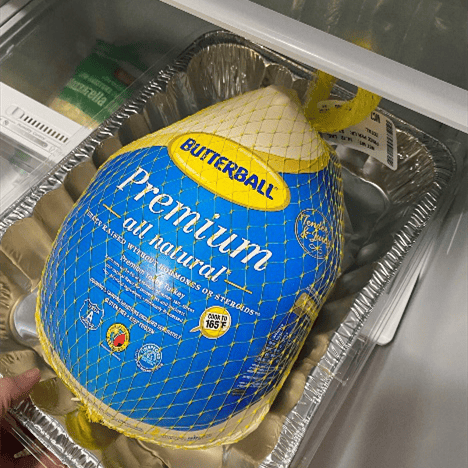
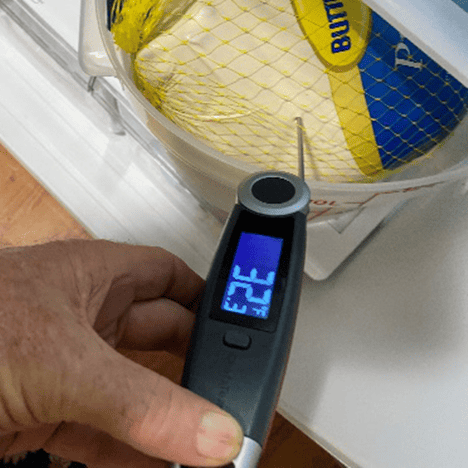
Always double-check your temperature readings. It takes a minimum of three days to thaw a turkey from frozen solid to thawed completely. The rule of thumb is approximately 3 hours per pound, the larger the turkey, the longer it will take. You can take up to five days to complete the thawing process. Word of caution, never attempts to cook a partially frozen turkey. Either cook it from a completely frozen state or fully thawed, never in between. The turkey will not get done and you will end up with a turkey that is half cooked and half raw. Follow the thawing process fully, no shortcuts, because there are no shortcuts to thawing a turkey.
Now that we have our turkey fully thawed, we must determine what we are going to do next, some form of brining is recommended. Either wet brining, or dry brining. If you are using a butterball turkey, it has been injected by the processor and reaps no benefit from wet brining. The wet brining will draw out the injected butter and turkey broth. That means we will need to dry brine it, and that is a simple process. First, remove the giblets and neck from the turkey and any ice you may find inside the body cavity. Rinse the bird thoroughly, and then pat it dry with paper towels. Then you will take your seasoning, I like to mix mine together and put them into a shaker with large holes in the top to get my seasoning evenly balanced and coat my bird evenly. Remember, dry brines contain kosher salt, and this will draw out any surface liquids, which is good. Place the bird back into the refrigerator uncovered for a minimum of 12 hours. If you are wet brining, you will want it in a container to deep enough and large enough to immerse the bird into your brining solution breast down, and it needs to remain in the brine for 1-3 days.
Turkey Brining Solution
- 4 quarts water
- 1 cup kosher salt
- 1 cup brown sugar
- 1 TBSP whole black peppercorns
- 1 TBSP whole allspice berries
- 1 TBSP chopped dried parsley,
or 3 TBSP fresh chopped parsley - 1 large container with a lid
Add all the ingredients into a large pot, bring to a boil, shut off the fire and allow the brine to cool completely before brining your turkey.
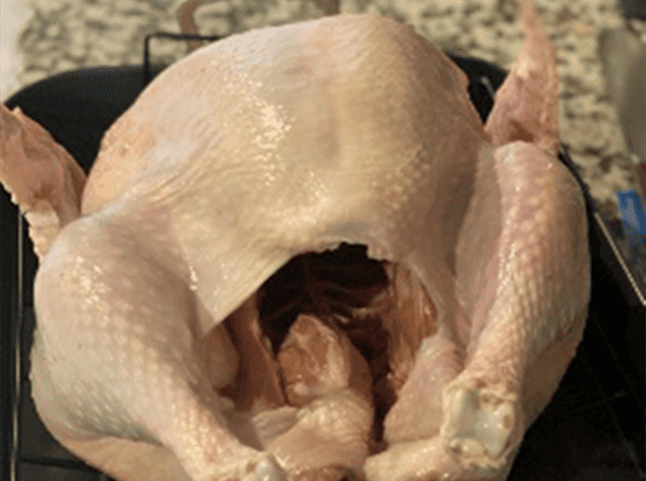
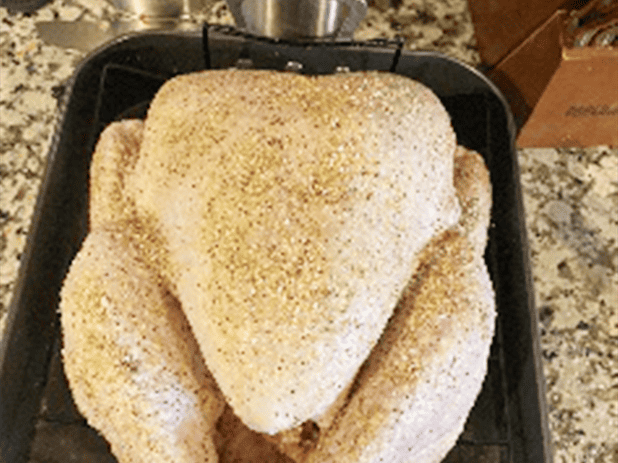
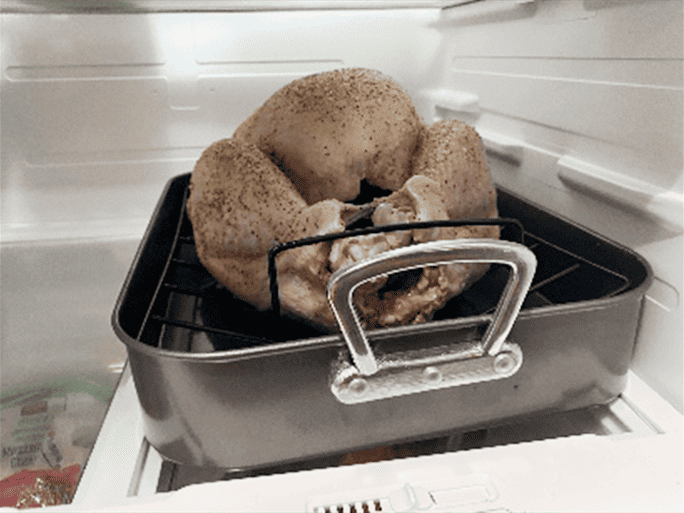
Now that we have our turkey thawed, brined, and prepared, now we will talk about how to roast the turkey to produce the best tasting, most moist turkey you can cook. First, set your oven to 450⁰F, once it is preheated, then place your seasoned turkey on a roasting rack into the oven and cook the turkey uncovered for exactly 30 minutes. Once you have roasted your turkey for 30 minutes, cover your turkey with foil and turn the oven down to 325⁰F. You are going to cook your turkey from this point forward until it reaches a minimum of 160⁰F, this is the pull temp, not the finished temp, you are going to pull your turkey from the oven and let it rest for a minimum of 20 minutes. Carry over cooking will get it to 165⁰F. Remember, you will pull it when the breast reaches the desired temp, the high will be 20⁰F-30⁰F higher and this is okay, the thigh has a lot of fat and is dark meat and can take the heat.
Before we cover some other things to go with the turkey, we should look at some alternate cooking methods for turkey and understand some rules about how to cook the turkey by smoking, deep frying, and grilling it on your barbecue grill.
Smoked turkey done right is moist, succulent, tender, and probably much more flavorful than the traditional roasted turkey. When smoking a turkey, you will follow all the same procedures, the difference is you need to get your smoker hot, just like pre-heating your oven, before you place the turkey into the smoker. You want it on a rack with a drip pan underneath. You will smoke it for at least 7 hours and cook time is going to be 9-14 hours depending on how much it weighs. To get it to the state you want it at, first set your temperature on your smoker to 225⁰F, get your turkey in to the smoker and start the smoking. After 6 hours turn the smoker up to 275⁰F and cook it at this temperature until it reaches the correct pull temperature of 160⁰F in the breast portion at the bone. I recommend you use a Smartro ST54 for this, the probes can be inserted into the bird in the thigh and the breast and will allow you to monitor the temperature without opening the door. Always verify the temperature with an instant read thermometer, and then pull the bird.
Another method you can use is deep frying. This is the most dangerous and people have burned down their houses when the pan of oil on the turkey fryer exploded when the turkey was lowered into the oil. Water and hot oil do not mix. Make sure that no ice is left in the turkey anywhere, make sure that you have completely dried the turkey inside and out, and then season it with a dry rub. Once you get it into the fryer, you will need to fry it for 20 minutes per pound and then pull it from the fryer and let it rest. At this point you will take your temps to make sure the turkey is done, if it isn’t, you will take into the house and cook it in the oven to get it to temp.
The last way to do your turkey is to do it on your grill. For this, you really should spatchcock the turkey, that is a technique where you leave the skin intact and remove the backbone. You will then apply some sharp pressure to the breastbone forcing the turkey to become flat. Once you have this done, then season your turkey. Get your grill hot, and then place the turkey in the center of your grill with an aluminum foil pan underneath it with the heat source on the ends, you do not turn or flip your bird, maintain as close to 300⁰F temperature for your grill and cook your bird until it reaches the desired temperature of 160⁰F. Remember with a spatchcocked bird, the cooking time is cut down tremendously because you have removed the backbone and made the bird laydown flat, decreasing the surface cooking area by half.
Now that we have discussed all the different ways you can cook a turkey, and how to cook them. What are you going to serve with this perfectly cooked bird? Well, we will think about Thanksgiving, a truly American Holiday, and what we serve with our turkey. First, in the United States, where Thanksgiving is our national holiday, we are serving pumpkin pie, stuffing, mashed potatoes, candied yams, green bean casserole, turkey gravy, yeast bread rolls, and cranberry sauce or jelly. Every family has their Thanksgiving traditions, some are going to add a variety of pies, like Pecan Pie, Cream Pies, Fruit pies, and meringue pies, like lemon meringue, chocolate and coconut pies topped with meringue. Everyone has their own traditions, but the potatoes, sweet potatoes, dressing, gravy and rolls, everyone eats.
Timing is everything doing a meal like this and knowing already that you must dedicate your oven for at least four hours just for your turkey. That means we are doing some prebaking and precooking so that when it comes time to roast the turkey it is the only, only item we are cooking except possibly boiling our potatoes to make mashed potatoes with.
I start my meal preparation by baking off all my pies and getting them cooled and stored. Fruit pies, nut pies, pumpkin pies and meringue pies can all be baked and left out on the counter overnight the cream pies must be refrigerated. I am going to share my pumpkin pie recipe it is the most traditional.
John’s Pumpkin Pie
I use the same recipe that my mom did, right off the back of the can of Libby’s Solid Pack Pumpkin, I do not use the pie filling mix. I follow this recipe to the letter with the exception that I exchange the ground cloves with ground nutmeg. I like the flavor better, but that is a personal taste preference.
Mixing the pie is easy, first mix the sugar and spices in a bowl, then in a separate bowl, beat your four eggs, add the evaporated milk to the eggs. Add the pumpkin to the sugar and spices and slowly add the milk and eggs, whip it in the bowl with a wire whip until it is completely smooth, takes about 3 minutes. Then take your prepared pie crusts, whether you make them yourself or buy them, make two 9-inch-deep dish pie shells. Preheat your oven to 425⁰F and place your pies with the shells still frozen on a cookie sheet. I cannot stress to you how important that you have your pie shells frozen. If you use a thawed or fresh pie crust, the edges will burn and break before your pie sets. You can use foil or rings to try and protect the edge of the crust but having the crust frozen when you fill it works so much better and there is no need to try and wrap the edge in foil or use an edge protector for your pie. Bake it for 20 minutes and 425⁰F for fifteen minutes and then turn down the oven to 350⁰F and cook it until the filling sets, usually 35-45 minutes. Once the pies are done, remove them from the oven and place them on cooling racks and let them cool for at least 3 hours. Serve with whipped cream and enjoy the pies.
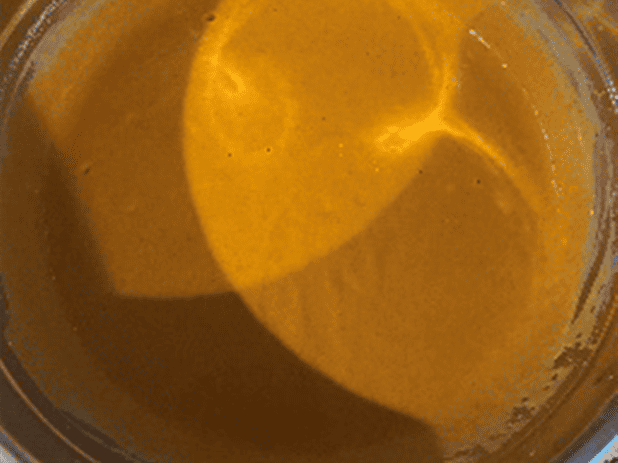
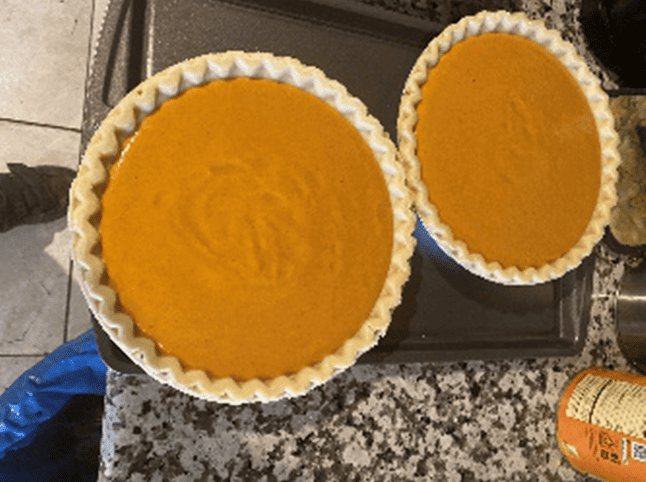
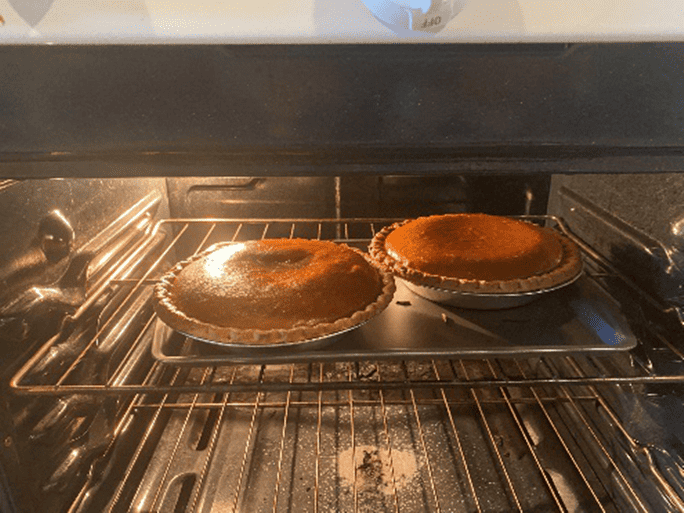
Mashed Potatoes
- 3 pounds of potatoes, white, russets, Yukon gold, or red, boiled
- ½ stick or 8 TBSP whole unsalted butter
- 4 ounces, ½ cup of milk, half and half, or heavy cream
- Salt to taste
- White pepper to taste
*Optional, add roasted garlic for roasted garlic mashed potatoes
Mashed potatoes can be done super creamy, with texture, skin-on, but with all the ways to cook them, some things you need to do, first, make sure you salt the water, potatoes need to be cut into uniform size chunks so that they cook evenly, the more surface area, the quicker they cook. Second, you want to dry the potatoes out by placing them on a cookie sheet lined with foil or parchment paper after they are boiled to get them soft enough to mash, and then place them in a 350⁰F oven for 5 minutes. This will remove and/or evaporate the excess water and make your mashed potatoes less wet. Melt your butter and add it to your milk, half and half, or heavy cream with salt and pepper. I prefer to use white pepper because it blends in better with the potatoes, and some people avoid the mashed potatoes if they see the pepper.
When making mashed potatoes, if you are going to do skin-on reds, use a ricer and mash them by hand, with all the others, you have three options, use a food mill, use a ricer, or use a mixer, hand held or stand type, place the potatoes in the bowl after removing from the oven and mash them, if you use a food mill, place the food mill on the mixing bowl and then process your potatoes. Add the melted butter, salt, pepper, roasted garlic, and milk, half and half, or heavy cream and fold it together if using a food mill or ricer, or blend it with beaters for a hand mixer, and a cake paddle with a stand mixer. Once you make them put them in a foil pan and cover with foil so that you can reheat them in the oven once you remove your turkey.
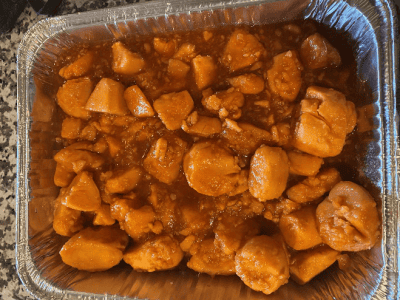
Candied Yams
- 3 pounds fresh, sliced cooked sweet potatoes or three cans of drained sweet potatoes
- Juice from one small jar of maraschino cherries
- 2 cups of brown sugar
- ½ stick or 8 TBSP whole unsalted butter
- Half package of marshmallows, either mini or jumbo
Doing candied yams can be simple. First place your cooked or drained canned sweet potatoes into a mixing bowl. On the stove melt the butter and add the brown sugar and juice from the maraschino cherry and cook into a syrup, this will be very thick, pour it over your sweet potatoes and then place in a foil pan and cover with foil. Once you get the turkey cooked, place the sweet potatoes into a 350⁰F oven and bake for 45 minutes, uncover the yams, and place the marshmallows on top, return to the oven and toast, they will melt into the yams, the other option is to do what chefs do and either brown the marshmallows in the broiler, or hit them with a torch and brown them.
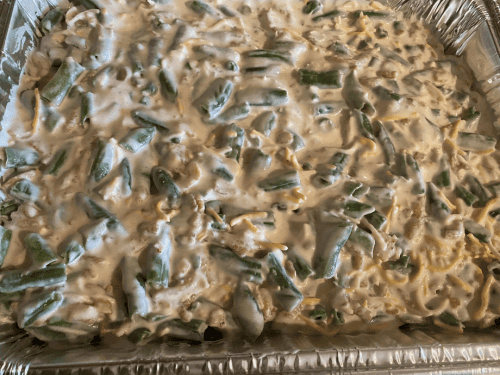
Green Bean Casserole
This is one of my favorite casseroles and is great anytime of the year.
- 2 pounds fresh or frozen cut green beans
- 1 family size can cream of mushroom soup
- 2 containers of French-fried onions
- 2 TBSP Worcestershire sauce
- Salt to taste
- Black pepper to taste
- 1 ½ cups shredded cheese
Mix all your ingredients together except for one container of the French-fried onions, place in a foil pan and then top them with the second container of French-fried onions, cover with foil, cook this in the oven until the green beans are done and the casserole reaches 165⁰F. Note make sure you cook all your sides, Yams, potatoes, and green bean casserole to a minimum of 165⁰F before serving them.
Turkey Gravy
Prep time 10 minutes, cook time 15 minutes
- 2 TBSP unsalted butter
- 2 TBSP all-purpose flour
- 2 cups of separated turkey pan drippings
- Salt and pepper to taste.
In a sauce pot, melt the butter and combine with the flour and cook it to a nice brown roux. Add your cooled, separated pan drippings and start whisking the ingredients together. Cook it until the gravy thickens and will coat the back of a spoon. Pour into a serving dish and it is ready to go.
Soft dough dinner rolls
- 3 ¼ cups bread flour
- 1 cup warm water
- ¼ cup white sugar
- 1 large egg
- 2 tablespoons butter, softened
- 1 tablespoon active dry yeast
- 1 teaspoon salt
- 2 tablespoons butter, melted
Step 1
Grease a 9×13-inch baking dish.
Step 2
Place bread flour, water, sugar, egg, 2 tablespoons softened butter, yeast, and salt into a mixing bowl. You can mix this dough by hand, with a hand blender, in a stand mixer, or in a bread machine. once you have the dough mixed and the dough forms, place it in a greased bowl and let it rise, then punch it down.
Step 3
Divide dough into 12-15 equal pieces and form into rolls. Place rolls in a prepared baking dish, brush with melted butter, and cover dish loosely with plastic wrap; let rise until doubled in volume, about 30 minutes.
Step 4
Preheat oven to 375 degrees F (190 degrees C).
Step 5
Bake rolls for 15-20 minutes until done and then serve.
Stuffing is an important component of the meal, and we should look at what stuffing is, how to cook it, and should we stuff our bird with stuffing before we cook it or after we cook it.
Stuffing is bread mixed with aromatics, celery and onions, butter, chicken broth, salt, black pepper, and poultry seasoning, and then it has so many variations, from cornbread dressing to some of the more interesting varieties like the one I used here which is stuffing with pine nuts and golden raisins. Stuffing is cooked already, so if you stuff your bird with it, it presents a temperature issue, which is you must get the stuffing to 165⁰F before you pull the turkey. It can make your turkey dry and unpalatable. You may be asking why it does that and the answer is that it is bread, and it absorbs all the juices in the turkey as it cooks, without injecting the turkey and constant basting, the turkey will dry out by the time the stuffing is hot and you must take the temperature of the stuffing in the very center of the stuffing. You will need a thermometer with a very long probe so that you can get completely to the very center of the stuffing inside the bird to make sure it has reached 165⁰F. I have found that if I wait until the turkey is fully cooked, then pull the turkey from the oven and stuff the cooked bird and then return it to the oven for an additional twenty minutes, the cooked stuffing looks amazing and will not dry out the turkey as it cooks.
Stuffing:
- Prep time: 15 minutes Cook time: 45 minutes
- One package of seasoned bread cubes
- 4 cups of chicken broth
- 8 TBSP whole unsalted butter
- 1 white onion diced fine
- 4 stalks of celery sliced
- 1 tsp poultry seasoning
- 1 TBSP kosher salt
- 1 TBSP Black Pepper
*Optional 1 cup raw pine nuts and 1 cup of golden raisins.
Melt the butter in a skillet and add the onions and celery, sweat until the onions are translucent, add your seasoning and cook another three minutes, add the chicken broth, and bring to a boil, pour over the bread cubes, mix thoroughly and place dressing in a pan and bake it at 375⁰F for 45 minutes. For my variation, add on cup of raw pine nuts to the celery and onion and cook for 5 minutes, then add 1 cup of golden raisins, and cook for an additional 3 minutes, then add the broth and bring to a boil.
Now that we have discussed all the ways we can cook a turkey, all the sides for Thanksgiving Dinner, let’s take a deeper look at the thawing and brining process.
This is the absolute most critical step in making the moist, succulent, tender turkey you are trying to cook and what you do prior to it going into the oven is just as important as what you do with it while it is in the oven. Temperature is king. Thawing temperature, holding temperature, roasting temperatures, pulling temperature and finish temperature. These are the keys to making the best turkey possible. It is imperative to get yourself both kinds of thermometers, an instant read thermometer and the Smartro ST54 dual probe leave in cooking thermometer. Turkey has several temperature zones that need to be monitored in the thawing process as well as the cooking process. Remember it takes a minimum of three days to thaw a frozen turkey, the larger it is, the longer it takes. You have five days to get it thawed fully, and then a day or two to brine it before roasting it. You cannot go beyond the seven days safely; the turkey will begin to spoil. If you have your turkey thawing for three days and it is still not above 30⁰F, you need to take it to the sink, take it out of the packaging and run it under cold water until all the ice is removed, and the turkey is thawed, should only take thirty minutes. Dry the turkey, then season it, and place it back in the refrigerator uncovered for a day, this will finish removing in internal ice crystals in the meat and allow the liquid to drip into your pan.
If you are going to brine it in liquid, get your brine ready and make sure it is cool and your container is large enough to hold the turkey and for the brine to completely cover the turkey placed breast down in your container. Once the brine goes in, you have up to three days before you must cook the turkey. Dry brining, you will cook the turkey the following day.
This is an opinion, and it is what I have done for 30 years, and my turkey comes out moist, tender, succulent and delicious. I only wet brine a fresh turkey, never a frozen one, the freezing process alters the meat, skin and fat structure and makes dry brining ideal for the turkey. Dry brine contains kosher salt, pepper, poultry seasoning, garlic, and onion powder. Coat the bird and then place it on your baking pan, place it back in the refrigerator overnight so that the skin tightens up and then when your ready, put it in the oven and bake it. Wet brining requires you to take it out of the brine, rinse it, pat it dry, then season it, and place it back in the refrigerator for at least 8 hours, and then put it in the oven to roast.
There are several options you can use with your bird. One of the more interesting ones is to put orange slices under the turkey skin to give your turkey some citrus hints, you can stuff the bird with sliced or cubed apples and diced onions, because the apples are not densely packed into the body cavity it doesn’t create issues with the bird getting to temperature and the apples will give it a nice flavor as well. Always use cooking apples or granny smiths, not red skinned apples. You can make cranberry stuffing, long grain and wild rice stuffing, the list is endless and all of it is about flavor.
After putting in all the work to make a great turkey dinner, making all the sides, desserts, and bread, the reward is the smiles on your guests face as they enjoy the meal you cooked.
The other things we do for turkey dinners is cranberry sauce or jelly. Most people use canned cranberry jelly or sauce, and it is an awesome flavor contrast to the roasted turkey. But what is cranberry jelly? Cranberry jelly is made from boiled cranberries with sugar, pectin or gelatin added to it, then cooled in a mold to make it look great. It isn’t hard to make from scratch, but fresh cranberries are not available year around, so using canned cranberries is what most people do.
Turkey is a phenomenal dish. Handling it right is the key to making it the most memorable meal you make.
Follow all the guidelines for safely handling it, always thaw a frozen turkey in the refrigerator, never on the counter or out on the porch. Always use a dual probe thermometer to track the thawing temperature making sure it gets to between 30⁰F and 34⁰F before you prep it for brining. Make sure you remove any ice inside the body cavity and run it under cold water for a few minutes after thawing it to rinse the body cavity and skin of any residues, remove the excess fat around the neck and between the legs at the opening of the body cavity where the turkey was eviscerated. Remove the giblets and neck from the bird. Check the neck cavity to make sure there is no giblets left inside the bird. Always salt and pepper the inside of the bird and season the skin. If you use a turkey like a butterball®, remember it has been pre-injected, so it benefits little from wet brining. Only brine fresh turkeys in a brining solution and that only for a maximum of three days. When using frozen turkey, use a dry brining method.
Monitor your temperatures from start to finish of the thawing and cooking process. Time and temperature, thawing and roasting all influence producing a great meal featuring turkey. Handle it safely, thaw it safely, cook it safely, whether you are roasting it, smoking it, grilling it, or deep frying it. You cannot be safe enough.
All your hard work will pay off and you will enjoy the best turkey you have ever cooked. None of the processes are difficult but does require constant monitoring to make it happen. If you are feeling overwhelmed, relax, a few simple steps, following some basic safety rules, using the right thermometers, and following through will give you the results you are seeking.
Your guests will thank you, no one will get sick, and the memories you make will last a lifetime. Why would we go through this much trouble, quite frankly because turkey is one of the most versatile meats you can cook, and you have so many options available to you with any of the leftover turkey that you will be making dishes containing turkey for at least a week.
One final though to share, save the bones, they make great roasted turkey stock, and you will be amazed at what the taste will do for your dishes in the future.
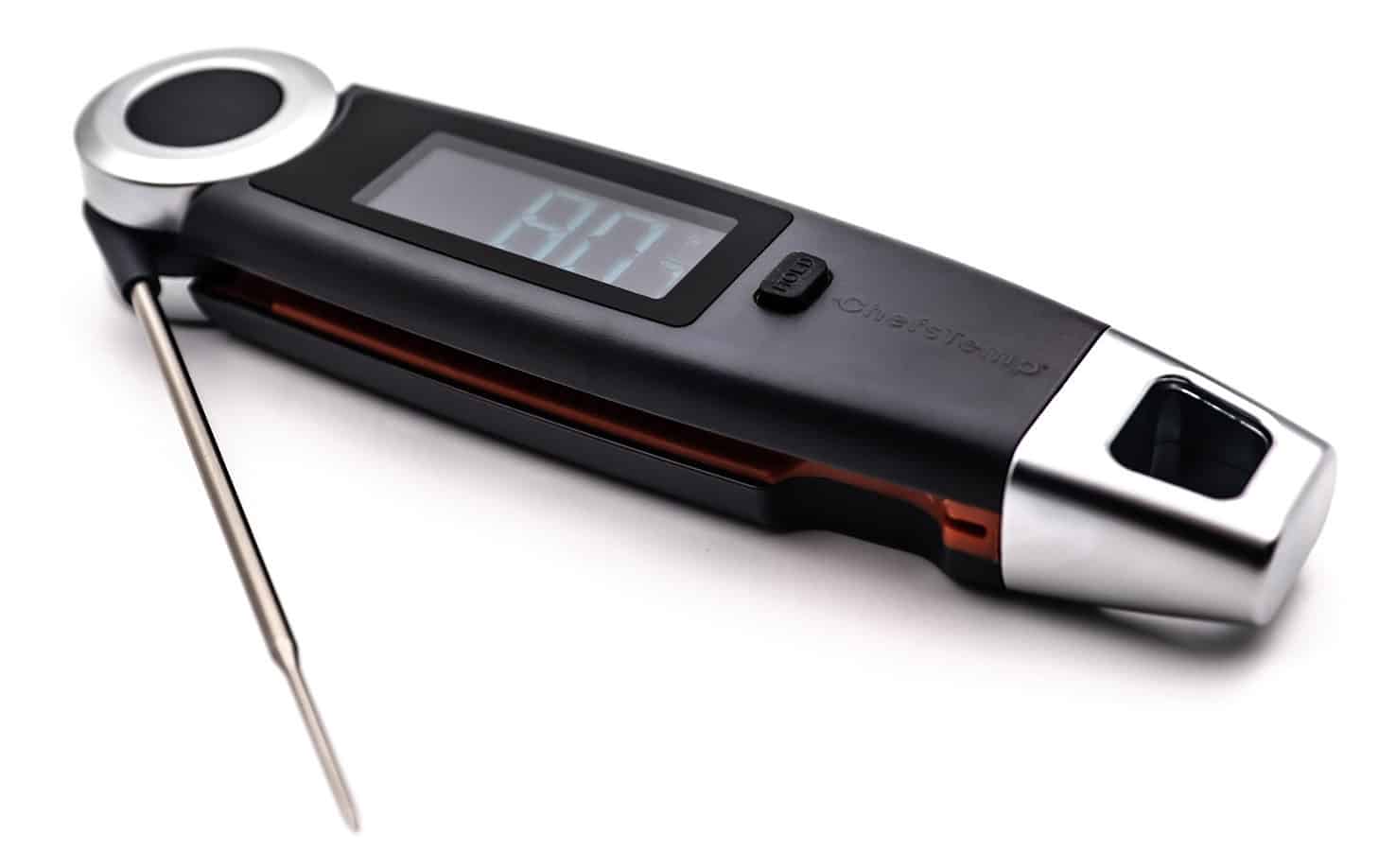
Finaltouch X10
The Finaltouch X10 thermometer from ChefsTemp gives an accurate reading not only for the inside of food but for surface temperatures as well. The diversity of the thermometer’s usage is second to none compared to other thermometers. By getting a reading within 1 second, the Finaltouch X10 from ChefsTemp is prepared to take on any task it is given.
3 Comments
Comments are closed.
Discover Other ChefsTemp Products
Discover more recipes and learn kitchen tricks by joining our cooking family on Facebook.
You may also like:
















[…] works most of the time; you can reheat roast chicken or turkey in the oven, soup in a pot, etc. Using a similar method will simply heat up the food close to how it was […]
[…] you need to know when using and reading a meat thermometer. It could spell the difference between a perfectly cooked turkey and one that ruins your family’s Thanksgiving […]
[…] Related link: How to Cook a Perfect Turkey? […]